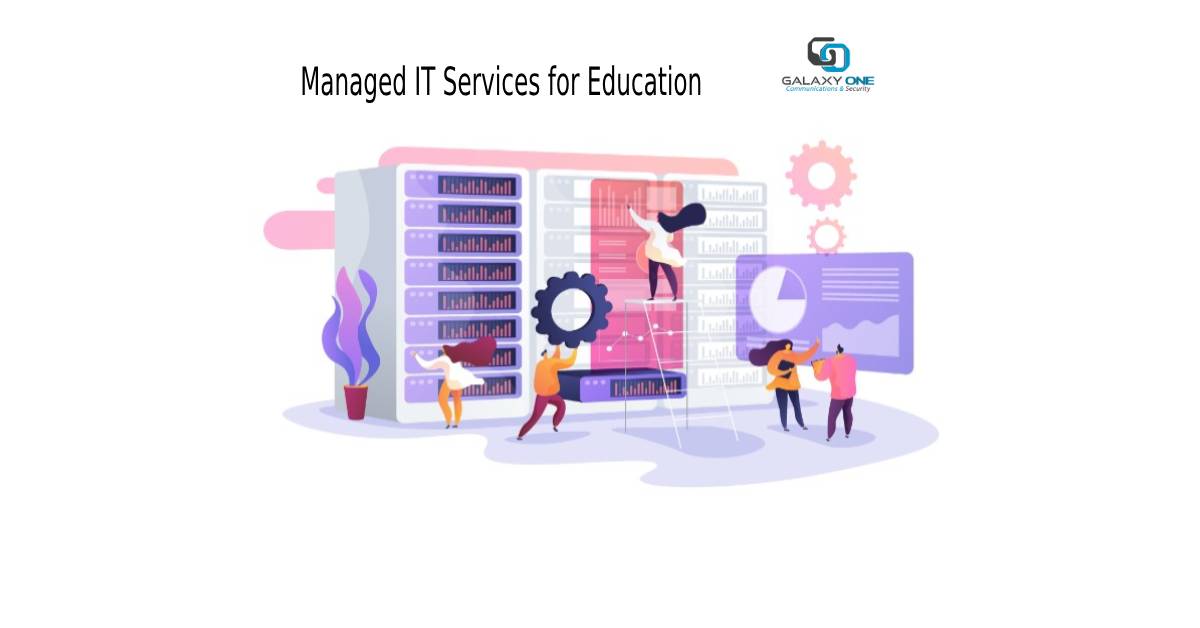In today’s digital world, schools face challenges with their IT systems. They need smooth operations for students, teachers, and staff. Managed IT services help schools, colleges, and universities. And Managed IT services improve, stay safe, and run smoothly. Let’s delve into how managed IT services can transform the educational landscape.
What are Managed IT Services for Education?
Managed IT services for education provide a full range of IT solutions for schools. These services help manage and support school IT systems. They make sure technology runs reliably and securely.
Key Benefits of Managed IT Services for Education
1. Enhanced Security Measures
Schools handle a lot of sensitive data like student records and financial details. Managed IT services use strong security measures to protect this data. They use firewalls, encrypt data, and run regular security checks. This protects against cyber threats and follows data rules.
2. 24/7 System Monitoring and Support
Uninterrupted access to technology is critical for educational continuity. Managed IT service providers track networks, servers, and devices 24/7. They spot and fix issues before they cause problems. This helps reduce downtime and ensures students and staff can always access resources.
3. Cost Efficiency
Outsourcing IT management can lead to significant cost savings for educational institutions. Managed IT services use a fixed subscription model. This means no big upfront costs for hardware and less need to hire and train IT staff.
4. Scalability and Flexibility
Schools have changing IT needs, especially during busy times or when adding new tech. Managed IT services offer flexible solutions that adjust to these changes. They can expand network capacity, add new software, or integrate cloud services.
5. Expertise and Strategic Guidance
Managed IT service providers bring expert knowledge and best practices to schools. They work with administrators to create IT plans that match the school’s goals. They manage technology upgrades. And they provide support and training to help schools use their IT better.
Implementing Managed IT Services: A Case Study
Imagine a progressive university facing challenges with outdated infrastructure and inconsistent IT support. By working with a managed IT service for schools, the university was able to:
-
Upgrade Network Infrastructure: Modernized campus-wide Wi-Fi network for seamless connectivity.
-
Enhance Security Measures: Implemented advanced cybersecurity protocols to protect student and staff data.
-
Streamline IT Operations: Outsourced helpdesk support to improve response times and user satisfaction.
Conclusion
Managed IT services have changed schools. They provide reliable, secure, and flexible IT support. These services help with teaching, learning, and administration. Schools using managed IT services get an advantage. They can focus on student success and growth.
Whether you’re a school, university, or education service? managed IT services can boost efficiency, security, and innovation.
Ready to elevate your institution’s IT capabilities? Contact Galaxy One LLC today to see how managed IT services can improve your school.
FAQ for Managed IT Services for Education
1. What are managed IT services for education?
Managed IT services for schools provide outsourced solutions designed for education. They include managing IT systems, cybersecurity, network management, and more. These services help improve efficiency and security while supporting educational goals.
2. What types of educational institutions can enjoy managed IT services?
Managed IT services support schools, colleges, and universities. They make operations run smoothly, improve tech access, and ensure compliance with rules.
3. What specific services do managed IT services for education include?
Common services include:
-
Network Management: Monitoring and managing network infrastructure to ensure reliability and performance.
-
Cybersecurity: Protecting student data and school information from online threats.
-
Data Backup and Recovery: Keeping important data safe and getting it back quickly if lost.
-
Cloud Solutions: Deploying and managing cloud-based services for storage, collaboration, and scalability.
-
IT Support: Assisting students and staff with tech issues to keep things running well.
4. How can managed IT services help improve educational outcomes?
By outsourcing IT management to experts, educational institutions can:
-
Focus more resources on educational initiatives rather than IT maintenance.
-
Improve tech access and reliability. This makes learning better for students and teaching easier for educators.
-
Ensure compliance with data protection regulations and educational standards.
-
Install scalable solutions that grow with the institution’s needs and technological advancements.
5. How does budgeting for managed IT services work in educational institutions?
Managed IT services usually work on a set, subscription model. This fits budgets and avoids surprise costs. It also ensures steady support and access to the latest tech.
6. Can managed IT services help educational institutions adapt to remote learning environments?
Yes, managed IT services help remote learning by:
-
Setting up secure virtual learning environments.
-
Providing reliable connectivity and access to digital resources for remote students and educators.
-
Implementing collaboration tools and platforms for virtual classrooms and administrative tasks.
-
Ensuring data security and privacy compliance in remote learning setups.
7. How can educational institutions get started with managed IT services?
To get started:
-
Assess current IT infrastructure and identify pain points or areas for improvement.
-
Find a good IT service provider with experience in education.
-
Work with them to create an IT plan that fits your goals and budget.
-
Start with important areas like cybersecurity and network management.
8. How does ongoing support and maintenance work with managed IT services?
Managed IT service providers offer helpdesk support, check systems, and do regular maintenance. This keeps things running smoothly, fixes problems quickly, and prevents future issues.




